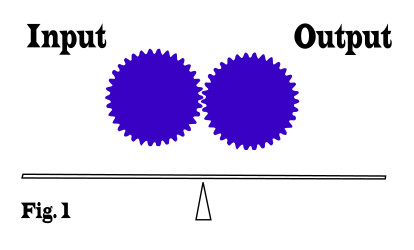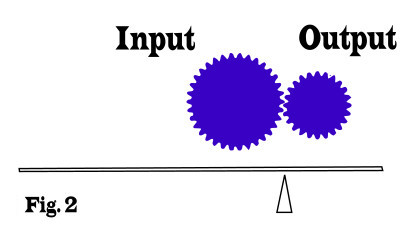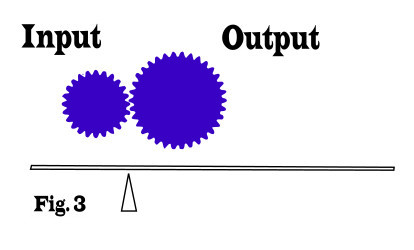I’m going to be explaining manual transmissions to Gamma in a month or two, so this is my homework for that.
The pre-requisite for my class Learn to Drive Stickshift is an understanding of Simple Machines.
The classic list of Simple Machines is Lever, Wheel, Pulley, Inclined Plane, Wedge, and Screw.
I disagree with the list, as it could be simplified. I.e. those are not the simplest machines. One of my favorite parts of science was simplifying things by cancelling units. I am going to try to show that here.
First is Screw, the most egregious example, the Screw is not a Simple Machine. It is a Compound Machine.
Take a wheel, make it thicker, and apply an inclined plane to it.
That’s a screw, just an inclined plane-wheel. Since Screw can be reduced to two simple machines, it does not count as a simple machine.
Next is Wedge. While I don’t think this can be reduced, I do think this is just an inclined plane.
If we move an object up an angled surface, we call that surface an inclined plane. But if we take an angled surface and move it into an object, we call it a wedge.
I disagree that wedge gets to be a known as a unique simple machine. I actually don’t care which term we use (it is easier to say “wedge” than “inclined plane”).
Wedge and Inclined Plane do the same thing – use an angled surface to make it easier to separate things. For the wedge, one is generally separating one object into two. For the inclined plane, one is generally separating one object from another. But it’s the same basic concept, and it shouldn’t count twice.
Since we’re on the topic of Inclined Plane, I thought there should be some overlap between Lever and Inclined Plane. I thought about how to combine them, or reduce Lever somehow. But my conclusion was they are both simple machines, and it may help to think of the lever not as a lever but think of it as a fulcrum. Replace Lever in the list with Fulcrum and it is more obvious that it’s not sharing anything with Inclined Plane.
Next is Pulley. It should come as no surprise to you that I consider a pulley to be a wheel plus a rope. Since one of its components is a Simple Machine, it can be reduced and is therefore not a Simple Machine.
I am open to the possibility that Rope should be promoted to Simple Machine.
Pulley, on the other hand, is just an application of Wheel. It’s a similar comparison to Wedge and Inclined Plane. Wedge and Inclined Plane are the same machine, just one is moving and one is stationary.
It’s the same with Wheel and Pulley – it’s the same machine, just one moves (a distance, yes they both move in that they rotate) and one is stationary.
That’s the end of my complaining about the classifications of Simple Machines.
For your homework for next week, please come prepared with an explanation of how a wheel can be reduced to an infinite number of very small levers around a central fulcrum.
The four wheels were underneath the borders, and the axles of the wheels were on the stand. And the height of a wheel was a cubit and a half.
1 Kings 7:32

 This is Alpha, the first-born, when he was 2YO.
This is Alpha, the first-born, when he was 2YO. This is Beta, the second-born, when he was about 2YO.
This is Beta, the second-born, when he was about 2YO. This is Gamma, the third-born, when he was about 18MO.
This is Gamma, the third-born, when he was about 18MO.




